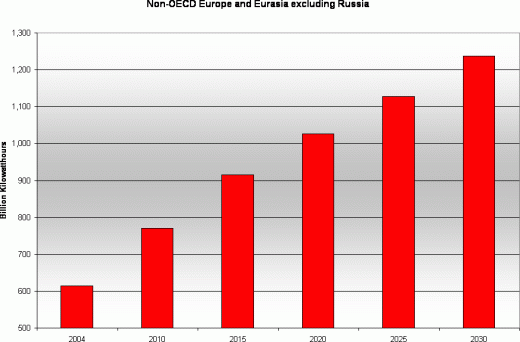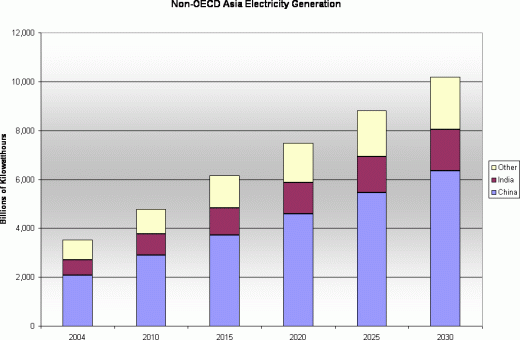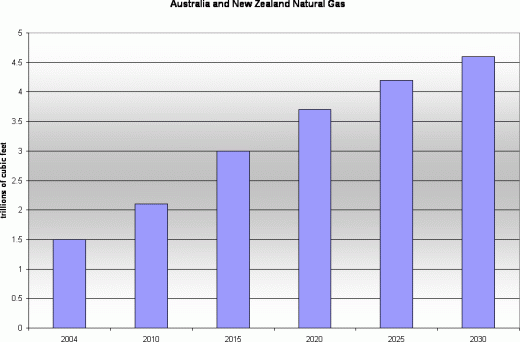Investing in Liquid Natural Gas as the Next Energy Growth Story
Commodities / Natural Gas Sep 16, 2007 - 12:55 AM GMTBy: Elliot_H_Gue
 Budapest , Hungary - Cruising along the Danube River in central Europe this week, I've passed through several rapidly growing economies in the former Eastern Bloc, including Hungary and Slovakia.
Budapest , Hungary - Cruising along the Danube River in central Europe this week, I've passed through several rapidly growing economies in the former Eastern Bloc, including Hungary and Slovakia.
Having visited Eastern Europe on several occasions in the past decade, it's amazing to see just how modern and developed these countries are becoming. Consumers now walk the streets chatting on mobile phones and sporting the latest Italian fashion just as in the big Western European capitals. Meanwhile, prime real estate in the center of a major capital like Budapest or Prague has seen dramatic price inflation in recent years, with property prices now approaching the levels of some US and European cities.
On the Danube, the growth in regional trade is just as clear. Barges carrying coal, automobiles and a host of other goods are a near constant sight on the river. And various manufacturing and freight infrastructure is also clearly visible.
And this isn't all just conjecture on my part; the economics statistics bear out the Eastern Europe growth story. Economic growth is staggeringly strong. The region as a whole saw growth of 6.8 percent in 2004, 5.2 percent in 2005 and 6.2 percent in 2006.
Not surprisingly, this growth is attracting attention from companies based further west. One of the key themes we discussed at an investment meeting in Vienna this week was the high proportion of income a number of larger Austrian firms are generating from Eastern European operations.
One of the consequences of all that growth: a rapid jump in demand for energy. Demand for crude oil and, more importantly, electricity is expanding at a rapid pace across emerging Europe. In fact, as the chart below indicates, demand for power for developing Europe and Eurasia has been, and is projected to continue, exploding.

Source: Energy Information Administration (EIA) International Energy Outlook 2007
The US Energy Information Administration (EIA) projects that demand for electricity from non-Organisation for Economic Co-operation and Development (OECD) Europe and Eurasia will jump to 1,238 billion kilowatthours by 2030, more than two times the current level. To put that into context, US and developed Europe power demand is projected to jump just 40 and 20 percent, respectively, during the same time period.
And it's not just developing Europe. The trends are even more impressive in developing Asian nations, particularly China and India. Check out the chart below for a closer look.

Source: EIA International Energy Outlook 2007
Chinese electricity demand is on track to grow at 4.4 percent annualized for the next 20 years, nearly three times the rate in North America.
That brings us to the question of how to satisfy all that demand. The truth is that there's no one magic silver bullet to solve the world's energy problems. Rather, meeting surging global demand for energy will be a matter of employing a mixture of solutions involving many different commodities and technologies such as coal, nuclear power and, of course, natural gas.
But natural gas certainly has many advantages; it will be among the fastest-growing energy sources globally during the next 20 years, particularly as a fuel for power plants. Two of the most obvious advantages it has are being more environmentally friendly than coal or petroleum and being cheaper and more widely available than crude oil, at least for now.
As I've noted on several occasions in this newsletter, I'm not here to save the world or make judgments about whether global warming is for real or to what extent it will affect the global climate.
The simple fact is that global warming is receiving plenty of attention all over the world, and governments are starting to regulate and tax carbon emissions. This is nowhere more true than in Europe. Therefore, as investors, we can't ignore the issue or the global political climate; however, we can certainly find ways to profit from it.
Gas is certainly one way to profit from global-warming legislation and taxation. Burning natural gas in a power plant emits around 40 to 50 percent less carbon dioxide than coal. And gas is also cleaner than coal in terms of other types of emissions, such as sulphur dioxide, nitrous oxides, mercury and particulate matter (ash).
The problem is that reserves of natural gas located near major consumption centers are mature and likely to decline. So growing demand for gas-fired power spells higher imports of gas into the US, Europe and developing Asia.
Traditionally, most of the gas traded globally has been transported via pipeline. For example, most natural gas imported into the US market has come via pipeline from Canada. But that's changing thanks to a technology known as liquefied natural gas (LNG).
When gas is supercooled to around minus 260 degrees Fahrenheit, it liquefies. LNG is also far more compact; roughly a beach ball-sized amount of gas is the size of a pingpong ball in liquid form.
In this state, gas can be loaded onto tanker ships just like crude oil and transported anywhere in the world. The natural gas market is transforming rapidly from a regional pipeline market to a truly global, international market, just like crude oil.
LNG trade is already having a big impact on gas markets. Earlier this year, US LNG imports spiked, offsetting a decline in Canadian natural gas imports. And by the middle of next decade, LNG is projected to surpass Canada as the largest source of US gas imports.
Globally, LNG already accounts for about 28 percent of natural gas trade. That share is set to grow significantly as China and India, among others, ramp up LNG imports during the next few years.
In the most recent issue of The Energy Strategist , I took a detailed look at the Asian coal markets and how Australia is a key beneficiary of growing Asian coal trade. Much of the same is true for natural gas: Australia is fast becoming a major exporter of LNG to Asia.
The nation is politically stable, and unlike many other resource rich countries, the government has been fair and transparent in its treatment of resource access and taxation. As a result, Australia has benefited from a massive increase in investment on the part of global energy firms. For a closer look, check out the chart below.

Source: EIA
Australia's natural gas production is set to increase at an annualized pace of 4.3 percent out to 2030. This is the fastest production growth projected for any country, anywhere in the world.
The vast majority of that gas will be exported. In fact, Australia alone accounts for all the gas production growth forecast for the developed world out to 2030.
I've studied the Australian market in recent years because the country's geographic proximity to Asia makes it an obvious beneficiary of rising Asian energy demand. The only problem is that Australian stocks have been tough for most US and Canada-based investors to access.
But that's changing. Interactive Brokers recently gave account holders direct access to Australian stocks for a tiny commission.
Other brokers are considering following that move. And I've noticed that some of the US shares of Australian firms traded on the over-the-counter market have begun to pick up volume lately.
There are a number of ways to play the gas growth theme. One is to buy into the companies that supply compression equipment and provide engineering services necessary to build out LNG infrastructure--mainly gas liquefaction and regasification terminals. And I'm also looking more carefully at a number of Australian and US firms that will be big producers of LNG in coming years.
By Elliott H. Gue
The Energy Letter
© 2007 Elliott H. Gue
Elliott H. Gue is editor of The Energy Letter , a bi-weekly e-letter as well as editor of The Energy Strategist , a premium bi-weekly newsletter on the energy markets. Mr. Gue is also associate editor for Personal Finance , where he contributes his knowledge of the energy markets.
Mr. Gue has a Master's of Finance degree from the University of London and a Bachelor of Science degree in Economics and Management from the University of London , graduating in the top 3 percent of his class. Mr. Gue was the first American student to ever complete a full degree at that university.
Elliott H. Gue Archive |
© 2005-2022 http://www.MarketOracle.co.uk - The Market Oracle is a FREE Daily Financial Markets Analysis & Forecasting online publication.



